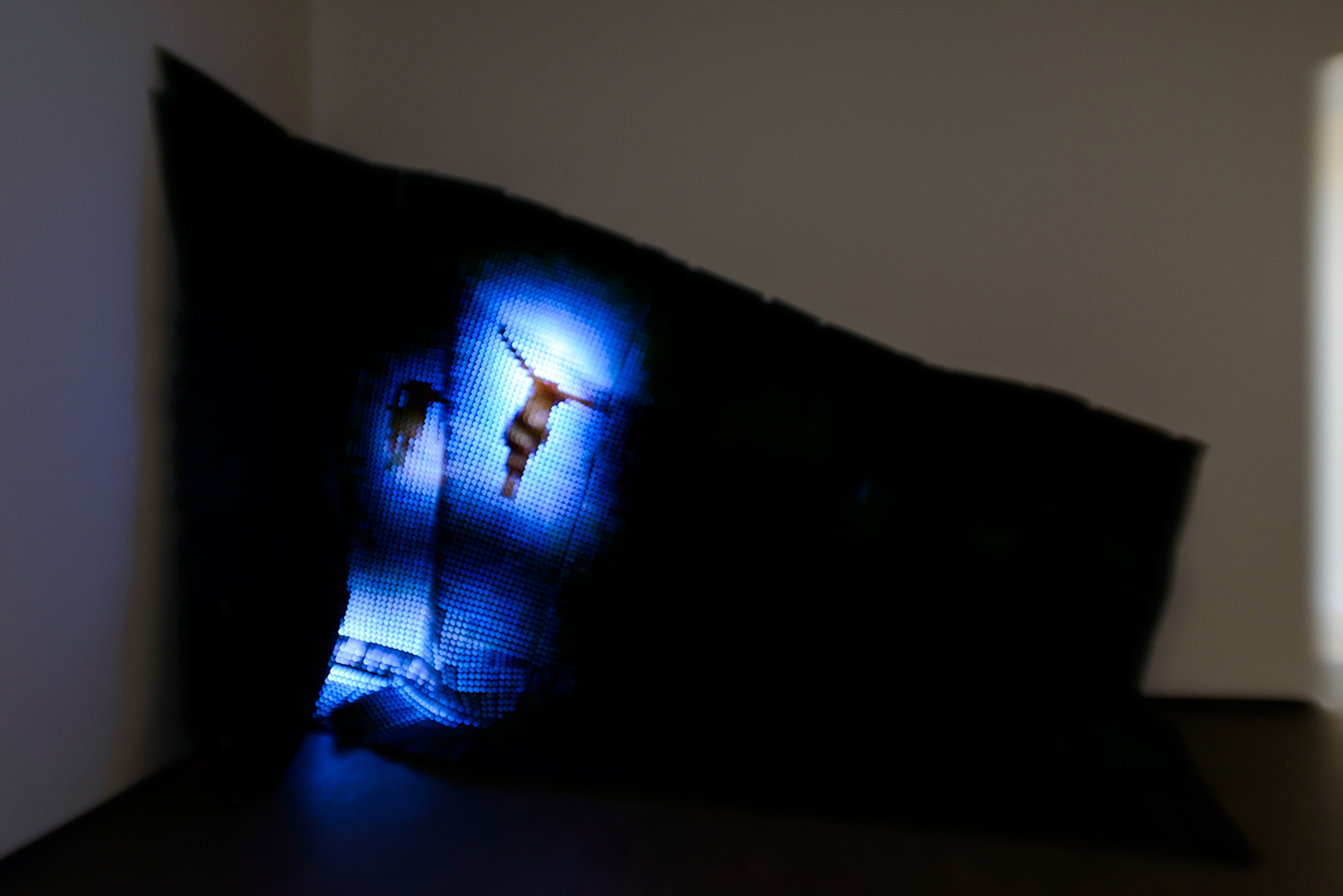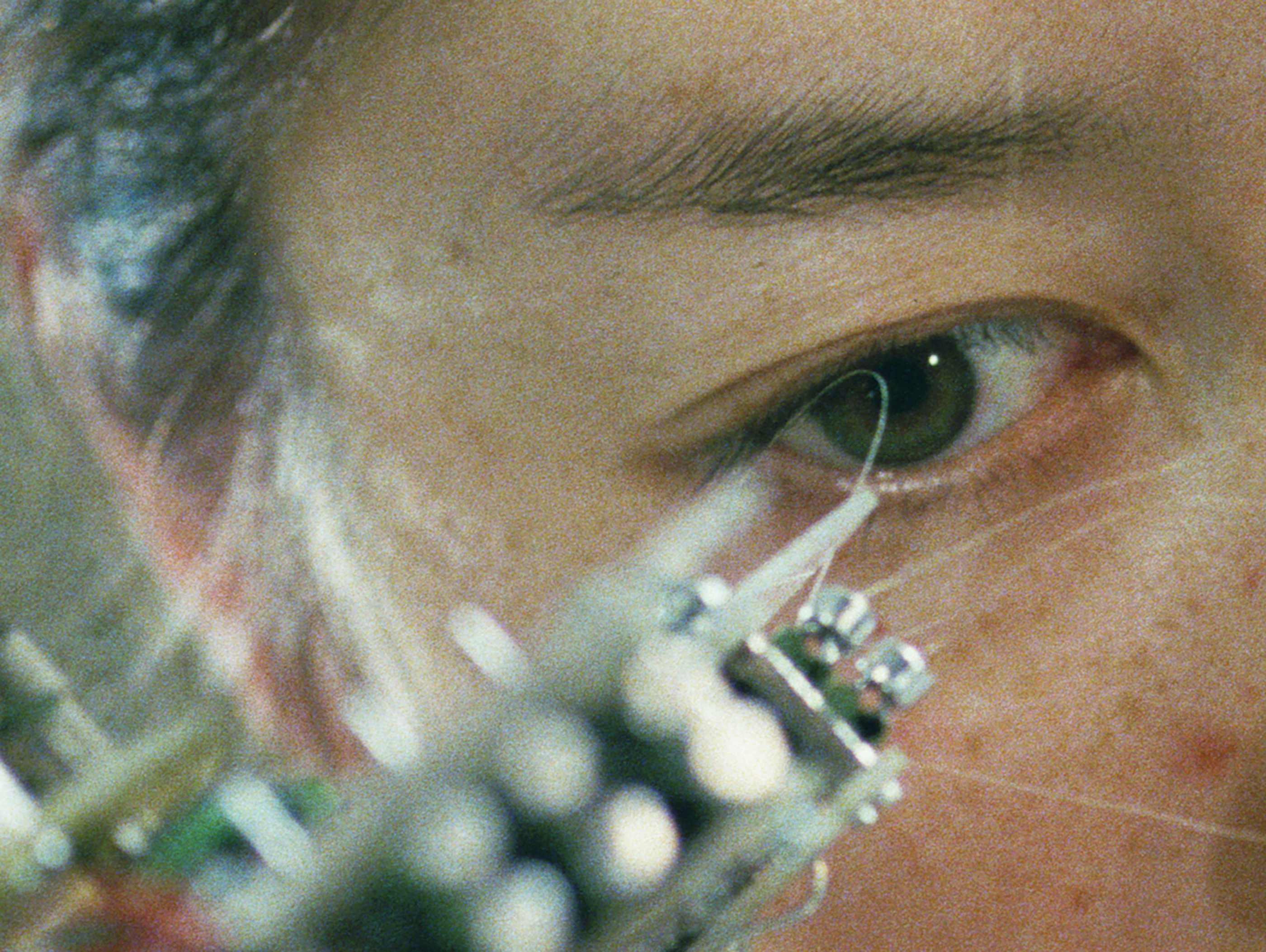The Electric Comma
A group exhibition produced by

Taking its title from Shannon Ebner’s installation, The Electric Comma links up the
Several works in The Electric Comma look at ways in which we communicate with information technologies and the ecological impact they may have, paralleling cryptographic and biological systems, revealing or imagining living infrastructures for artificial life. Andrey Shental’s video installation Descent into the Fungal features fungal mycelium networks that enable interconnected plants to communicate, as well as to transmit nutrients and energy. It looks at how certain life forms benefit from this network of connections while others fall prey to it. Today, a growing super-organism of algorithms and databases increasingly filters how we perceive, learn, communicate and remember. Sprawling around the globe like mycelium fabric, our current digital infrastructure bears more resemblance to living systems than outdated analogue technologies.
Misting Miner, a steam sculpture by Alexey Buldakov from the Russian collective Urban Fauna Lab, visualises the invisible phenomenon of mining crypto currency. The excess heat produced by the computer as it performs this process is a latent and untapped source of energy that can be redirected and used in many ways. Based on the Drunken Walk algorithm mycelium (a chance-based mathematical system used in financial theory to predict stock prices), Cheyney Thompson’s Stochastic Process paintings employ a formula to determine a particular three-dimensional colour system, while Wade Guyton’s black monochrome paintings generated by inkjet printers on a readymade computer format foreground the paradox of the pre-programmed error as the machine’s own “creativity”.
These days the distinction between artificial and human intelligence is less and less clear, increasingly appearing as a mere construct of our perception. In Pedro Neves Marques’s short film The Pudic Relationship between Machine and Plant, the lines between synthetic and organic life are further blurred. A robotic arm grazes the leaves of a Mimosa Pudica plant, a hypersensitive species that instinctively closes its leaves in response to the cold touch of the machine.

As the majority of our collective histories, memories and imaginations are being digitized, the effects of this on the human condition and on our planet are still played down. Encountering Dayanita Singh’s File Room is like glimpsing a frozen, forgotten world of paper. An archive of archives, this series of photographs depicts seemingly infinite stacks of records and memories stored in India. An elegy to the disappearing paper trail, File Room is a stark reminder of today’s colossal change in humanity’s relationship to memory. The way stories are told, records kept and histories constructed no longer follows the same trajectory as before.
With this paradigm shift in mind, a facet of the exhibition examines cognition and the way humans interpret the world around them – an area of knowledge that we still don’t fully comprehend. Suggesting the impossibility of finding a stable definition, Jonathan Monk’s neon parenthesis Something Contained, Removed greets viewers. The construction and interpretation of language is key to understanding how our minds work, how we perceive and communicate with an increasingly connected and automated world. In the thirteen-line poem forming the basis of Shannon Ebner’s series The Electric Comma, written language is transformed into an abstract and more intensely visual form. By turning unfinished poetry into image, Ebner’s process exposes the non-linear, often erratic way in which we experience language.
In a time where complex technologies with human-like capabilities are developed at an accelerating pace, The Electric Comma questions just how far the relationship between man and machine goes, and whether it is one of symbiosis, parasitism or something else. With its feral computational power, is the learning machine capable of being a poet or an artist? Can the machine harness the space of intuition, metaphor or poetry, and ultimately become aware of itself?
The Electric Comma has been curated by Katerina Chuchalina of
Participating artists
Erick Beltrán, Alighiero Boetti, Mircea Cantor, Nicolás Consuegra, Anthony Discenza, Shannon Ebner, Valentin Fetisov, Piero Golia, Wade Guyton, Jacqueline Humphries, Daniel Keller, Daria Martin, Pedro Neves Marques, Jonathan Monk, Trevor Paglen, Bridget Riley, Andrey Shental, Fabien Giraud & Raphaël Siboni, Dayanita Singh, Cheyney Thompson, Urban Fauna Lab collective